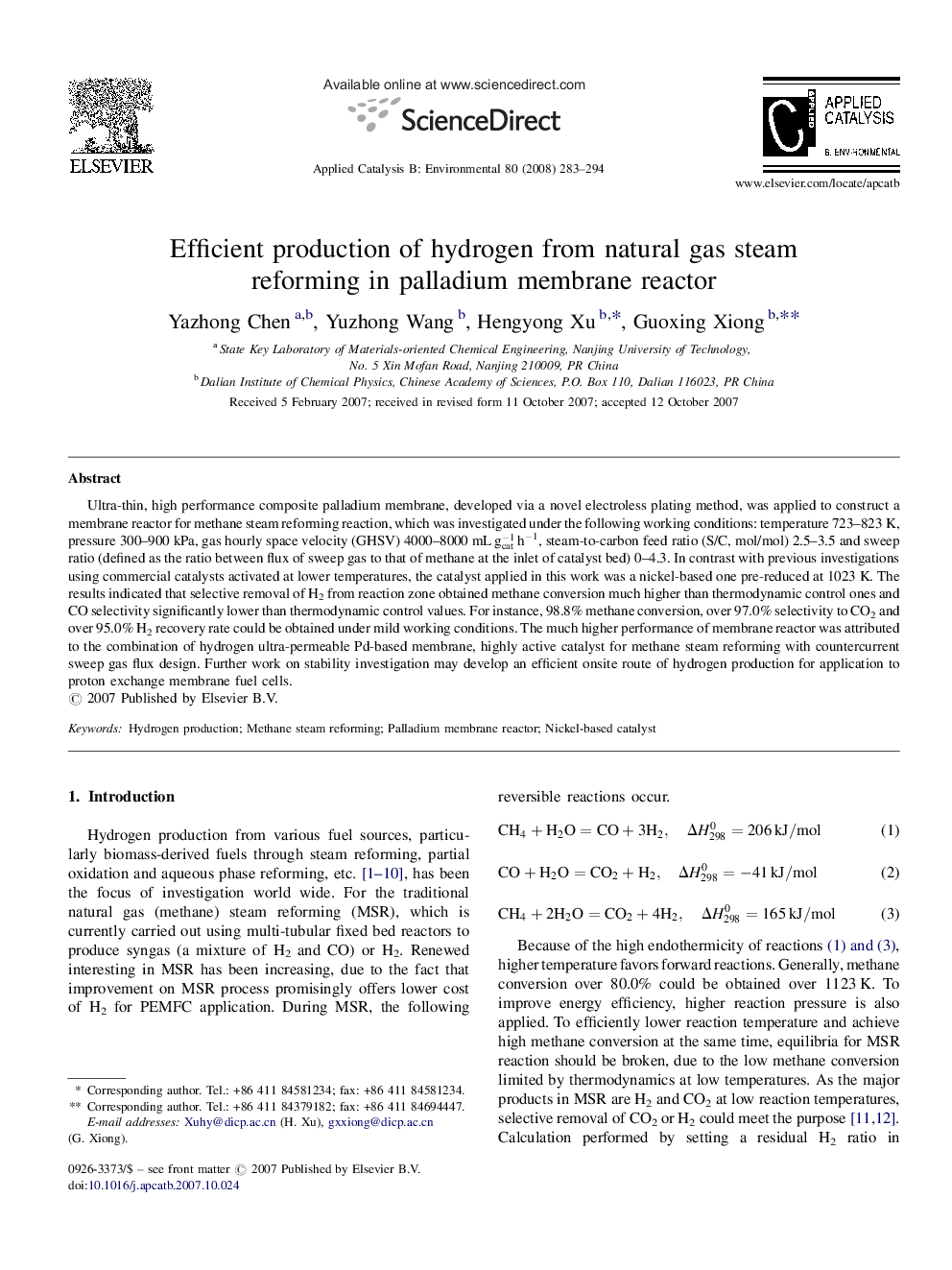| Article ID | Journal | Published Year | Pages | File Type |
|---|---|---|---|---|
| 48382 | Applied Catalysis B: Environmental | 2008 | 12 Pages |
Ultra-thin, high performance composite palladium membrane, developed via a novel electroless plating method, was applied to construct a membrane reactor for methane steam reforming reaction, which was investigated under the following working conditions: temperature 723–823 K, pressure 300–900 kPa, gas hourly space velocity (GHSV) 4000–8000 mL gcat−1 h−1, steam-to-carbon feed ratio (S/C, mol/mol) 2.5–3.5 and sweep ratio (defined as the ratio between flux of sweep gas to that of methane at the inlet of catalyst bed) 0–4.3. In contrast with previous investigations using commercial catalysts activated at lower temperatures, the catalyst applied in this work was a nickel-based one pre-reduced at 1023 K. The results indicated that selective removal of H2 from reaction zone obtained methane conversion much higher than thermodynamic control ones and CO selectivity significantly lower than thermodynamic control values. For instance, 98.8% methane conversion, over 97.0% selectivity to CO2 and over 95.0% H2 recovery rate could be obtained under mild working conditions. The much higher performance of membrane reactor was attributed to the combination of hydrogen ultra-permeable Pd-based membrane, highly active catalyst for methane steam reforming with countercurrent sweep gas flux design. Further work on stability investigation may develop an efficient onsite route of hydrogen production for application to proton exchange membrane fuel cells.
